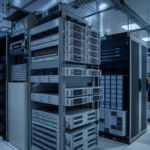Saudi Arabia is making bold moves to reshape its economy and position itself as a global leader in technology, innovation, and economic diversity. Recent reports indicate that the Kingdom plans to invest an estimated $100 billion to establish a tech and business powerhouse designed to rival the United Arab Emirates (UAE), particularly Dubai’s well-established reputation as a regional and global tech hub. This ambitious endeavor is a central part of Saudi Arabia’s Vision 2030 initiative, aiming to reduce dependence on oil, foster technological innovation, attract international talent, and create a diversified economy.
Vision 2030: A Blueprint for Transformation
Saudi Arabia’s Vision 2030 is a national strategic framework launched in 2016, championed by Crown Prince Mohammed bin Salman. The vision’s primary objectives are to diversify the Saudi economy, develop public service sectors such as health, education, and tourism, and make the country a hub for business and technology in the Middle East. While Saudi Arabia has long relied on oil as its economic mainstay, Vision 2030 aims to transform the nation into an innovation-driven, knowledge-based economy that fosters sustainable growth and international influence.
The proposed $100 billion tech hub, reportedly to be developed around the futuristic city of Neom, is one of the cornerstone projects to advance Saudi Arabia’s long-term goals. Neom itself, a $500 billion smart city project along the Red Sea, is intended to be a global hub for technological research, development, and implementation. The planned $100 billion investment would add to Neom’s potential, positioning Saudi Arabia as a leading player in the technology sector and creating competition for neighboring UAE, which has already made significant strides in tech innovation.
Key Elements of Saudi Arabia’s Tech Powerhouse
Saudi Arabia’s plan to build a tech-driven economy centers on several critical elements:
Investment in AI, Blockchain, and FinTech: The Kingdom is investing heavily in cutting-edge technologies, including artificial intelligence (AI), blockchain, and financial technology (FinTech). The Saudi Data and Artificial Intelligence Authority (SDAIA) has set aggressive targets to develop AI technology within the country, aiming for Saudi Arabia to be among the top 15 nations in AI by 2030.
Attracting Foreign Investment and Talent: By creating an attractive business environment, Saudi Arabia hopes to draw foreign investment and talent. Initiatives such as relaxed visa policies, business-friendly regulations, and incentives for foreign tech companies are in place to facilitate this. In the tech and innovation sectors, Saudi Arabia is also prioritizing partnerships with leading companies and universities worldwide to bring in expertise and develop local talent.
Building Smart Cities and Infrastructure: Neom is the flagship project under Vision 2030, but Saudi Arabia has several other projects focused on sustainable, technology-driven urban development. These projects include the Red Sea Project, Qiddiya Entertainment City, and the Diriyah Gate project. All are intended to showcase smart technologies, renewable energy, and sustainable infrastructure.
Promoting Startups and Entrepreneurship: Saudi Arabia’s Public Investment Fund (PIF) is actively funding tech startups and incubators to create a local tech ecosystem. The country has seen a rise in homegrown startups in e-commerce, health tech, and logistics, and initiatives like the Misk Foundation support young Saudis in entrepreneurship.
Renewable Energy and Sustainability: Saudi Arabia plans to become a leader in renewable energy, including solar and wind power. Projects like the world’s largest green hydrogen plant at Neom aim to reduce carbon emissions and drive sustainable development, furthering its global standing in clean energy technology.
Rivals and Collaborators: UAE and Saudi Arabia’s Competitive Landscape
The UAE, particularly Dubai, has long established itself as a tech and innovation hub, with a well-developed infrastructure, investor-friendly environment, and high levels of international collaboration. The UAE has launched its own AI strategy, advanced space missions, and created zones like Dubai Internet City, attracting top companies like Microsoft, Oracle, and Google. Saudi Arabia’s plans to rival the UAE in this space reflect a friendly competition that could ultimately benefit the entire region by creating a thriving ecosystem for tech innovation and attracting global attention.
While both countries share the goal of becoming tech hubs, their approaches have nuanced differences. Saudi Arabia’s scale of investment, particularly with Neom, is unprecedented, and it emphasizes sustainability and next-generation urban development. In contrast, Dubai has focused on creating a dynamic business environment and is often seen as a gateway to the Middle East and Africa for tech companies. The competition between Saudi Arabia and the UAE could accelerate tech growth across the Gulf, making it a major player on the global technology stage.
Challenges and Considerations
Saudi Arabia’s tech ambitions come with significant challenges:
Talent Shortages: Building a tech ecosystem requires skilled professionals. Saudi Arabia is investing in education and training programs, but it may take years to cultivate a local workforce capable of meeting the needs of a tech-driven economy. Saudi Arabia will need to attract and retain foreign talent, which could be a hurdle given the global demand for skilled workers in tech.
Regulatory Hurdles: Creating a business-friendly regulatory environment that fosters innovation while maintaining social and cultural standards is a delicate balance. Saudi Arabia has made strides in regulatory reform but will need to continue making adjustments to attract international companies and encourage startups.
Sustainability Goals: Developing Neom and other massive projects sustainably will require substantial investments in renewable energy and sustainable technologies. This aligns with Vision 2030’s goals but will require careful planning to ensure environmental standards are met.
Competition and Collaboration with UAE: While competition with the UAE can drive progress, collaboration may also be essential. By working together, Saudi Arabia and the UAE could create a Gulf-wide tech ecosystem that is greater than the sum of its parts.
The Road Ahead: Opportunities and Global Impact
Saudi Arabia’s $100 billion investment in a tech powerhouse is a visionary project that underscores the Kingdom’s commitment to becoming a global leader in innovation. If successful, this initiative could redefine Saudi Arabia’s economy, establish it as a key player in the tech sector, and create thousands of jobs in emerging fields. It may also attract global investment, as companies and countries recognize the potential for growth in the Gulf region.
Saudi Arabia’s ambitious vision challenges the traditional oil-based economy model, marking a paradigm shift for the Middle East. By embracing technology and sustainability, the Kingdom has an opportunity to redefine itself on the world stage, balancing cultural heritage with technological advancement. This investment not only has the potential to boost the Saudi economy but also to influence the global tech landscape, making the Gulf region a key player in the race for technological leadership in the 21st century.
The world will be watching as Saudi Arabia embarks on this ambitious journey. Whether it can rival or even surpass the UAE’s established tech ecosystem will depend on how effectively it navigates the challenges and maximizes its strategic investments.
listen:









